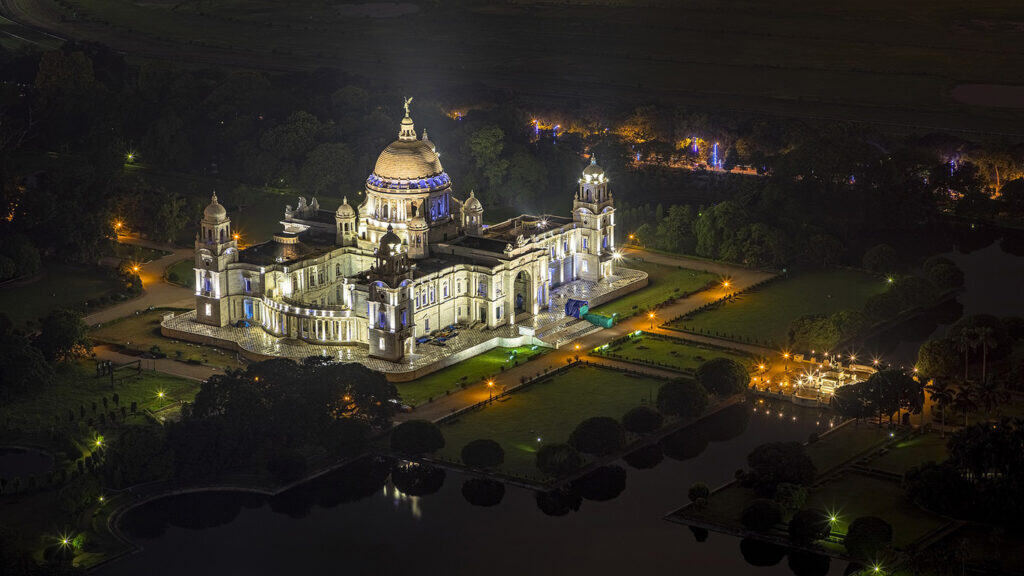
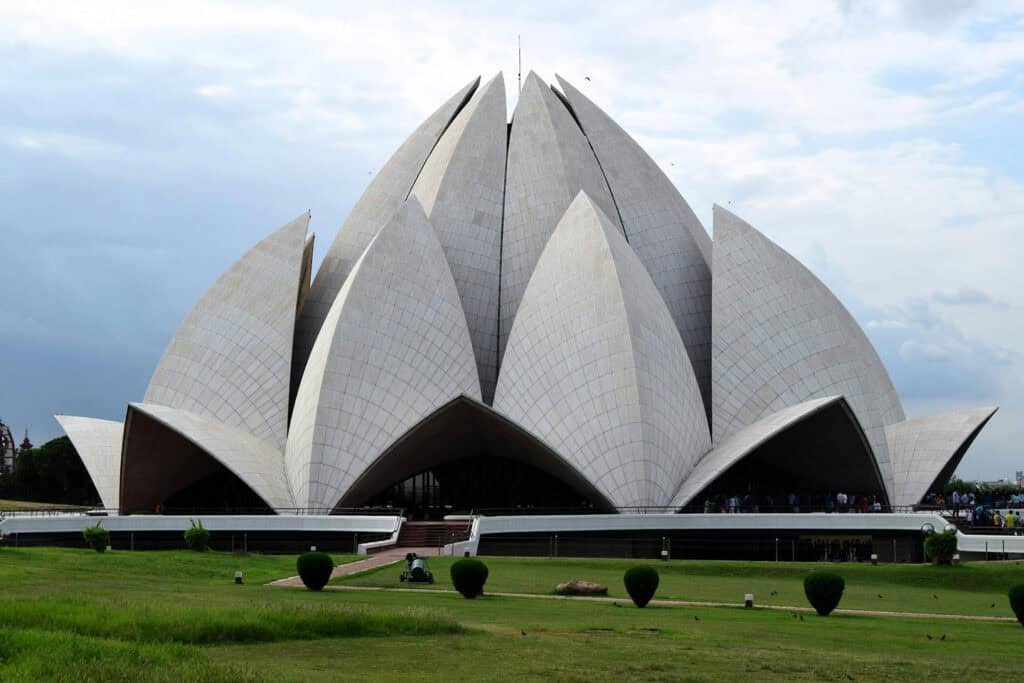

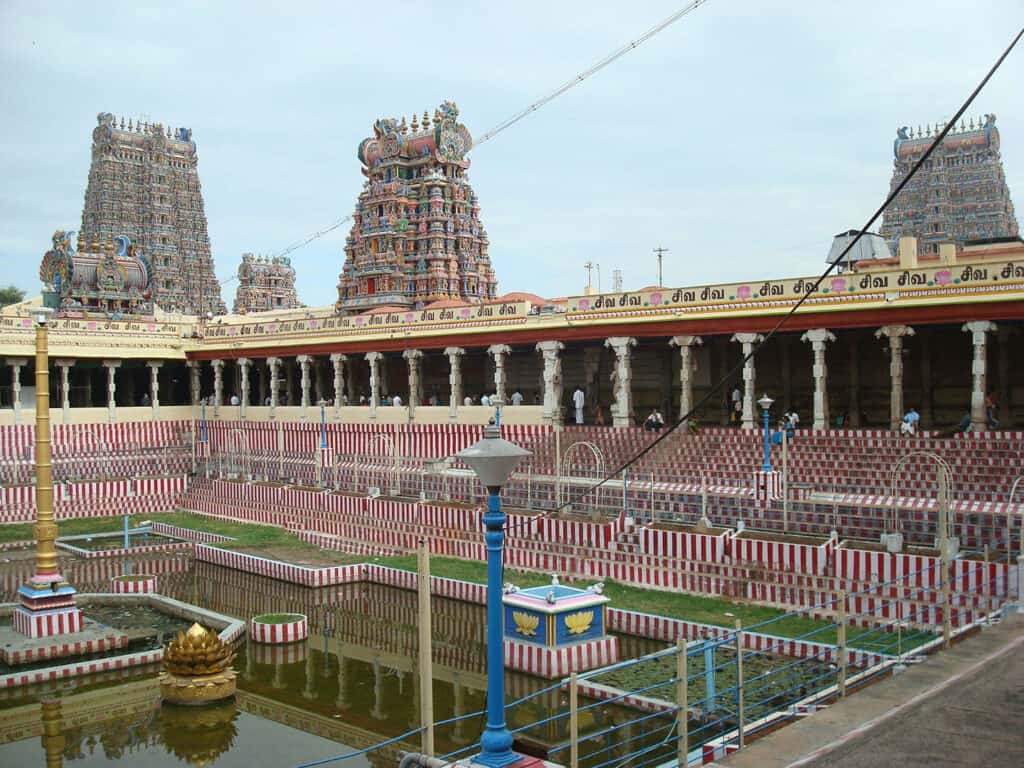
Start a journey through the architectural wonders of India, where millennia of history and cultural diversity converge into a breathtaking picture of design and craftsmanship. From the ethereal Taj Mahal to the ancient marvels of Khajuraho and Konark, each structure tells a story of artistic brilliance and cultural significance that spans centuries.
At Landmarks Architect, we are captivated by India’s architectural heritage. We invite you to explore the rich tapestry of India’s iconic buildings.
In this article, uncover:
- The Taj Mahal’s timeless allure
- Khajuraho’s intricate sculptures
- Konark’s celestial temple
- Indo-Islamic fusion marvels
- Colonial landmarks like the Victoria Memorial and Gateway of India
- Modern icons: Lotus Temple and Chandigarh Capitol Complex
- Regional gems: Meenakshi Temple, Mysore Palace, and Hawa Mahal
Prepare to be inspired as we delve into the architectural legacy of India, a journey that celebrates innovation, cultural diversity, and the enduring beauty of architectural masterpieces. Join us in exploring the stories behind these iconic buildings that continue to shape India’s architectural landscape today.
See Also Famous Buildings in India
Ancient and Classical Periods
India has a rich history of architectural art, spanning thousands of years. The ancient and classical periods of Indian architecture are known for their grandeur and intricate designs. The Taj Mahal, Khajuraho Temples, and Konark Sun Temple exemplify these architectural styles that flourished during this period.
1. Taj Mahal
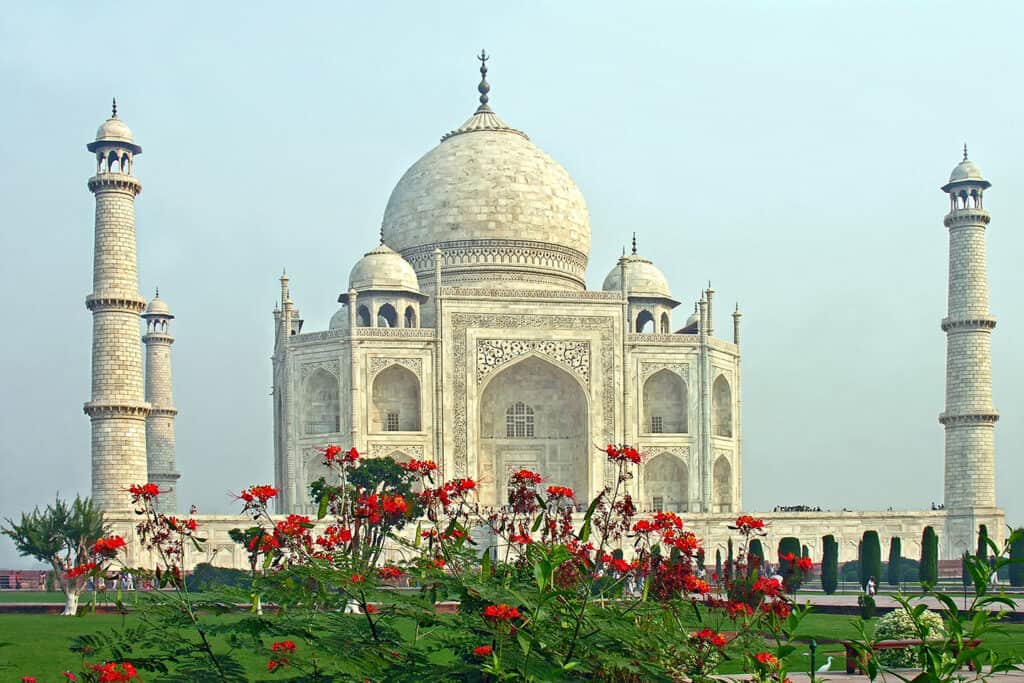
The Taj Mahal is a UNESCO World Heritage Site and a masterpiece of Mughal architecture. Built by the Mughal Emperor Shah Jahan in memory of his wife Mumtaz Mahal, the Taj Mahal is made of white marble and is known for its intricate carvings and beautiful gardens.
2. Khajuraho Temples
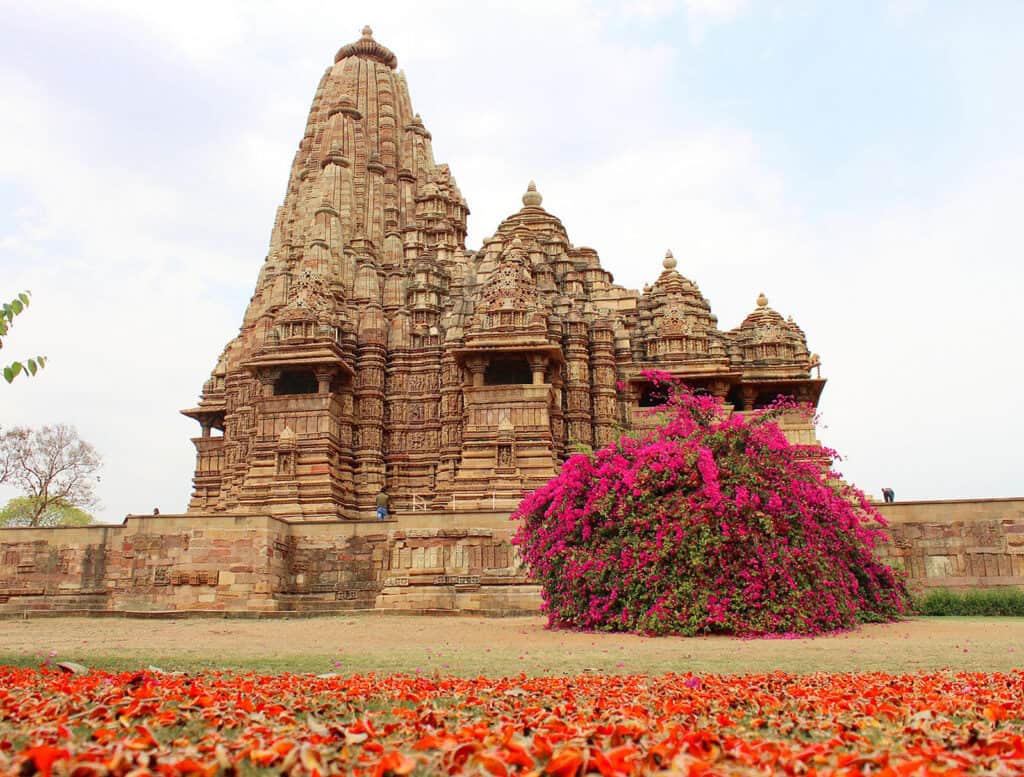
The Khajuraho Temples are a group of Hindu and Jain temples located in central India. Built between the 10th and 12th centuries, the temples are known for their erotic sculptures and intricate carvings. They are also a UNESCO World Heritage Site and are considered to be some of the finest examples of Hindu and Jain temple architecture.
3. Konark Sun Temple
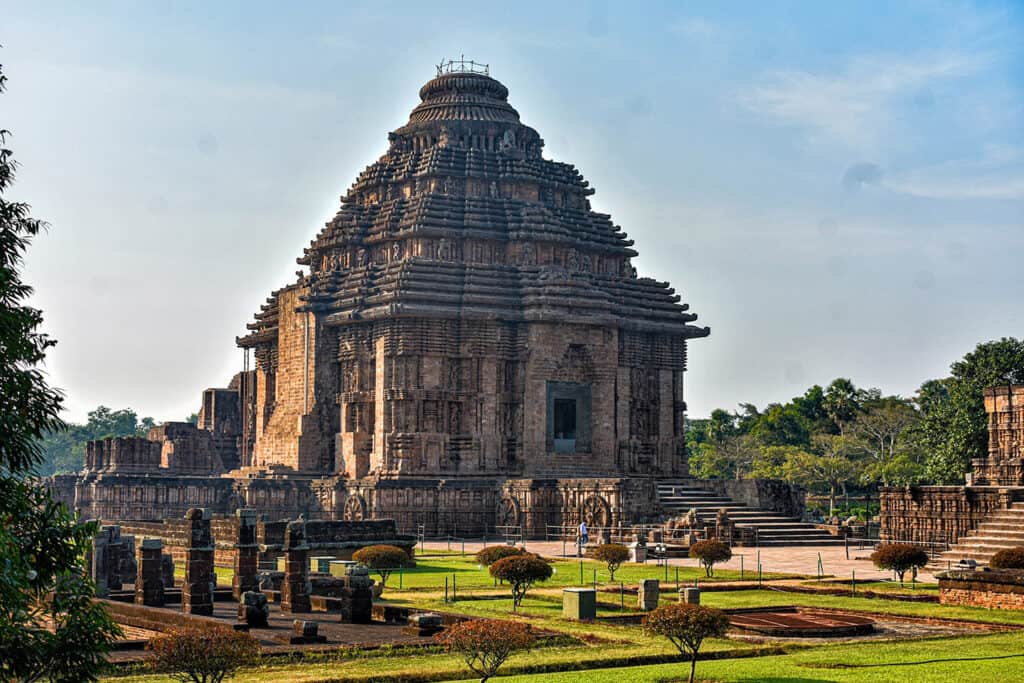
The Konark Sun Temple is a UNESCO World Heritage Site and a famous example of ancient Indian architecture. Built in the 13th century, the temple is dedicated to the sun god and is known for its intricate carvings and architectural elements. The temple is designed in the shape of a chariot and is considered to be one of the finest examples of temple architecture in India.
See Also Ancient Indian Art and Architecture
Medieval Period
During the Medieval Period in India, various architectural styles emerged, including Hindu, Islamic, and Indo-Islamic styles. Two of the most famous examples of architecture from this period are the Ajanta and Ellora Caves and Fatehpur Sikri.
4. Ajanta and Ellora Caves
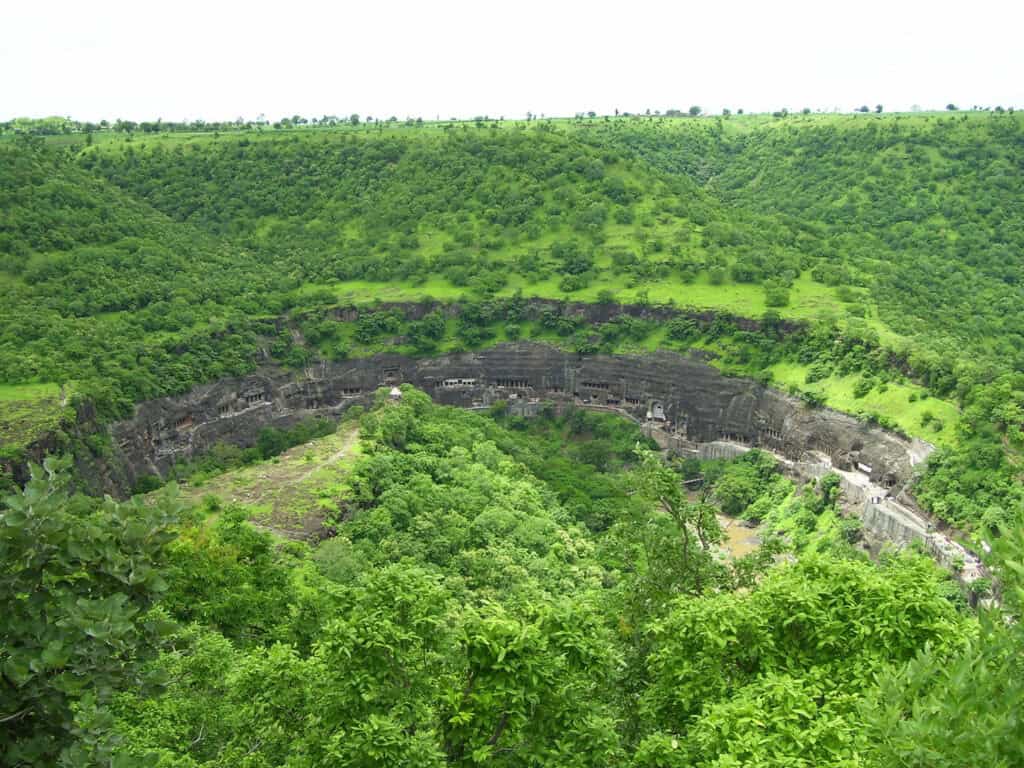
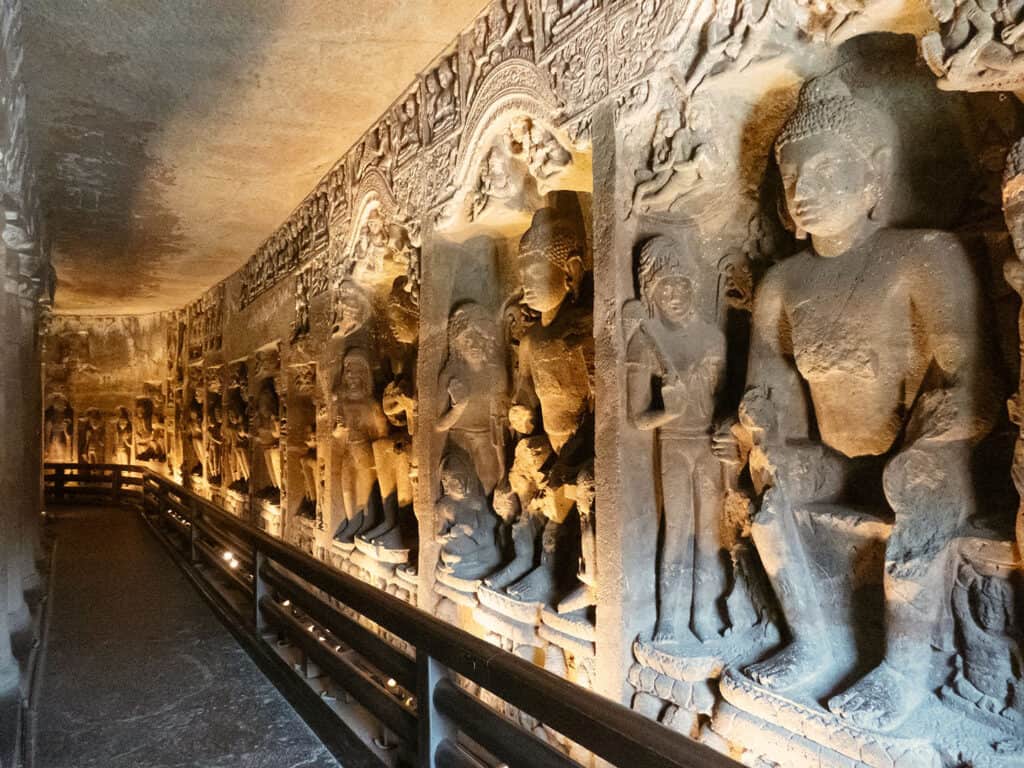
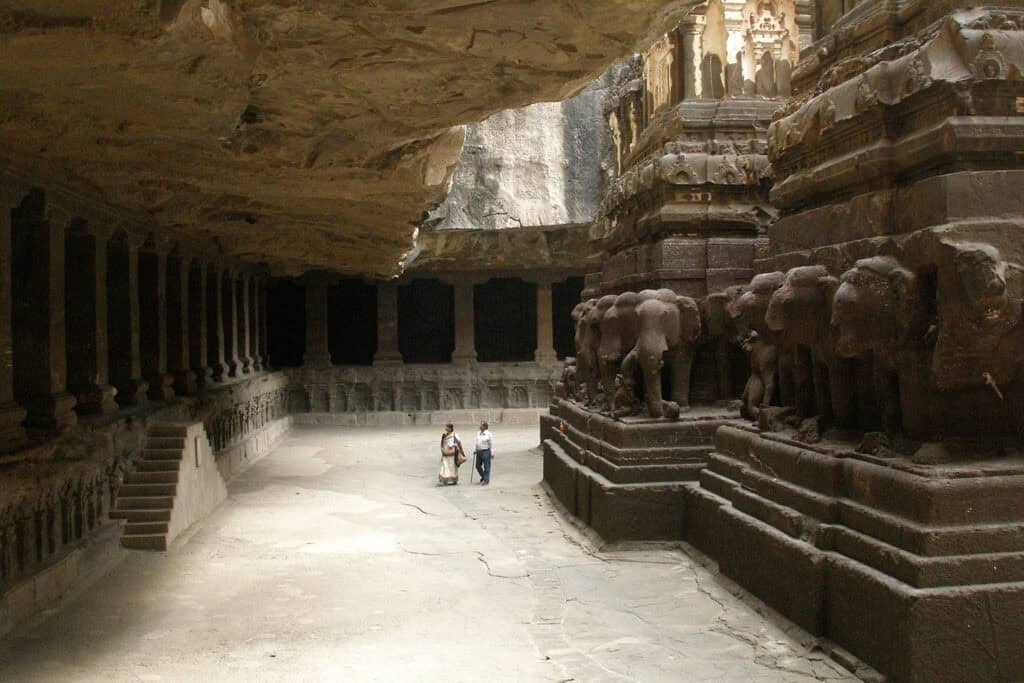
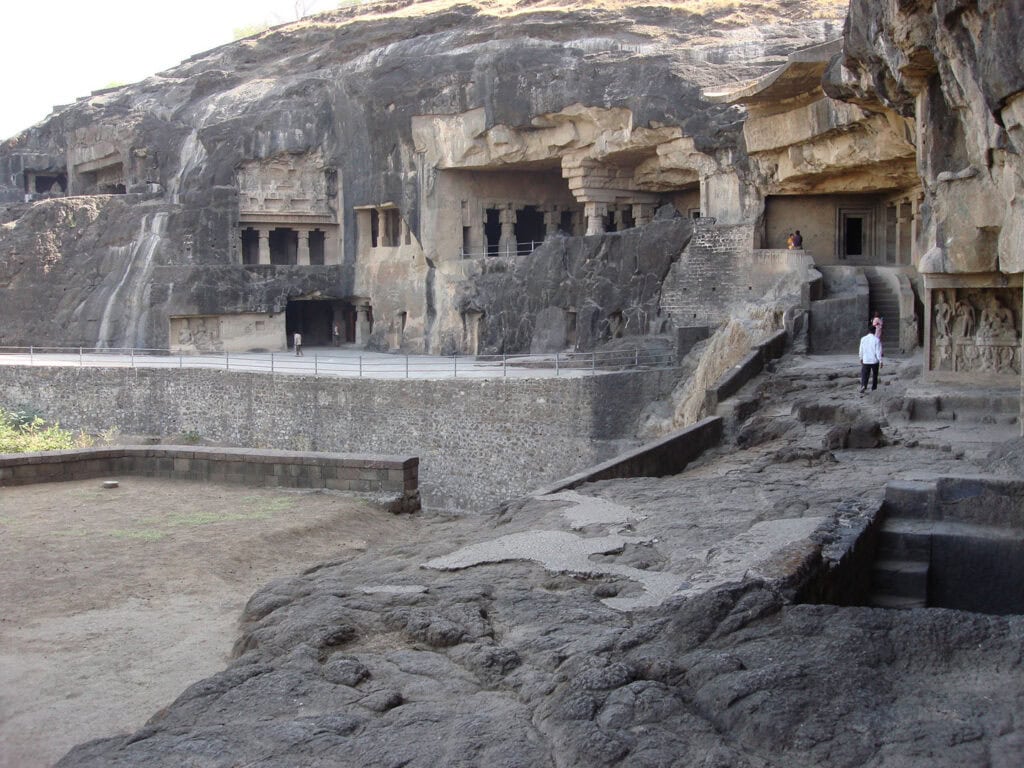
The Ajanta and Ellora Caves, located in western India, are UNESCO World Heritage Sites celebrated for their ancient rock-cut architecture. Constructed between the 2nd century BCE and the 6th century CE, these caves showcase intricate carvings and sculptures depicting Hindu, Buddhist, and Jain religious themes.
The Ajanta Caves feature magnificent wall paintings depicting the life of Buddha, while the Ellora Caves exhibit a fusion of architectural styles across different faiths, demonstrating India’s rich cultural and artistic heritage. These sites stand as remarkable examples of ancient Indian architectural and artistic achievement, drawing visitors worldwide to admire their historical and spiritual significance.
5. Fatehpur Sikri

Built by the Mughal Emperor Akbar in the late 16th century, Fatehpur Sikri is a complex of buildings made from red sandstone. The complex includes a mosque, a palace, and a tomb, all of which are examples of the Indo-Islamic architectural style. The complex was abandoned shortly after it was built, but it remains a popular tourist destination and a testament to the architectural prowess of the Mughal Empire.
See Also Buddhist Architecture
Indo-Islamic Architecture
Indo-Islamic architecture is a blend of Indian and Islamic architectural styles that emerged in the Indian subcontinent during the medieval period. The architectural style was influenced by Persian and Central Asian styles and was developed under the patronage of Muslim kingdoms. The style is characterized by the use of pointed arches, domes, and minarets.
6. Humayun’s Tomb
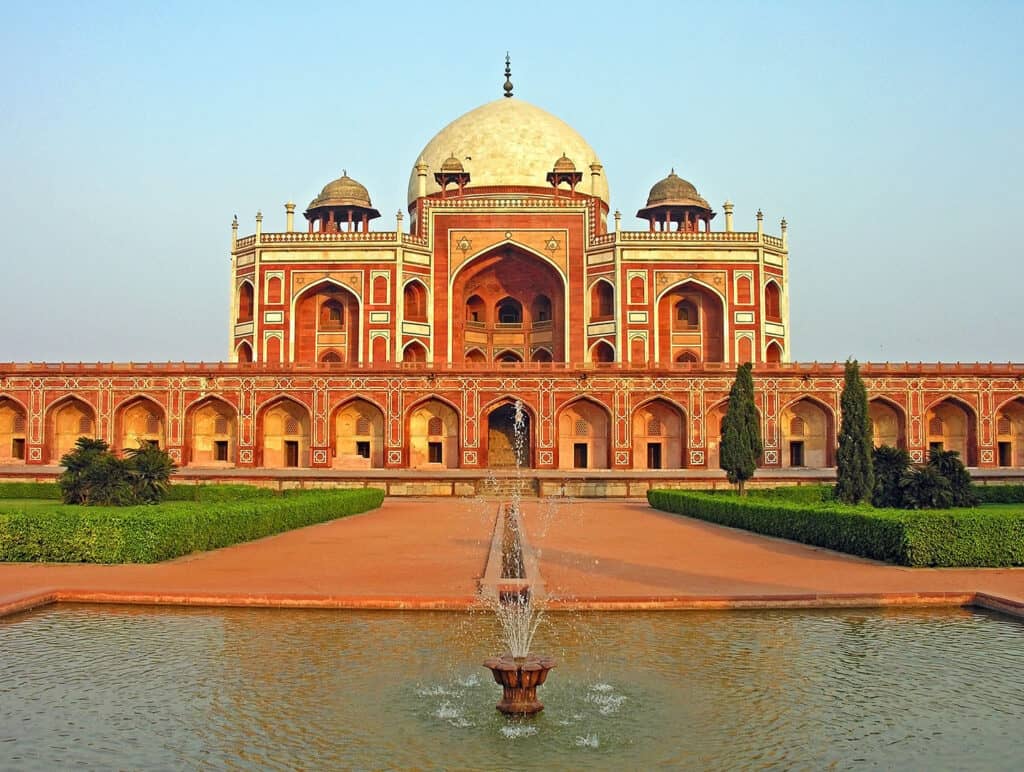
Humayun’s Tomb is a UNESCO World Heritage site and a prime example of Indo-Islamic architecture. The tomb was commissioned by Humayun’s wife, Empress Bega Begum, and was designed by Persian architect Mirak Mirza Ghiyas. The tomb features a combination of Persian and Indian architectural elements and is made of red sandstone and white marble.
7. Red Fort (Lal Qila)
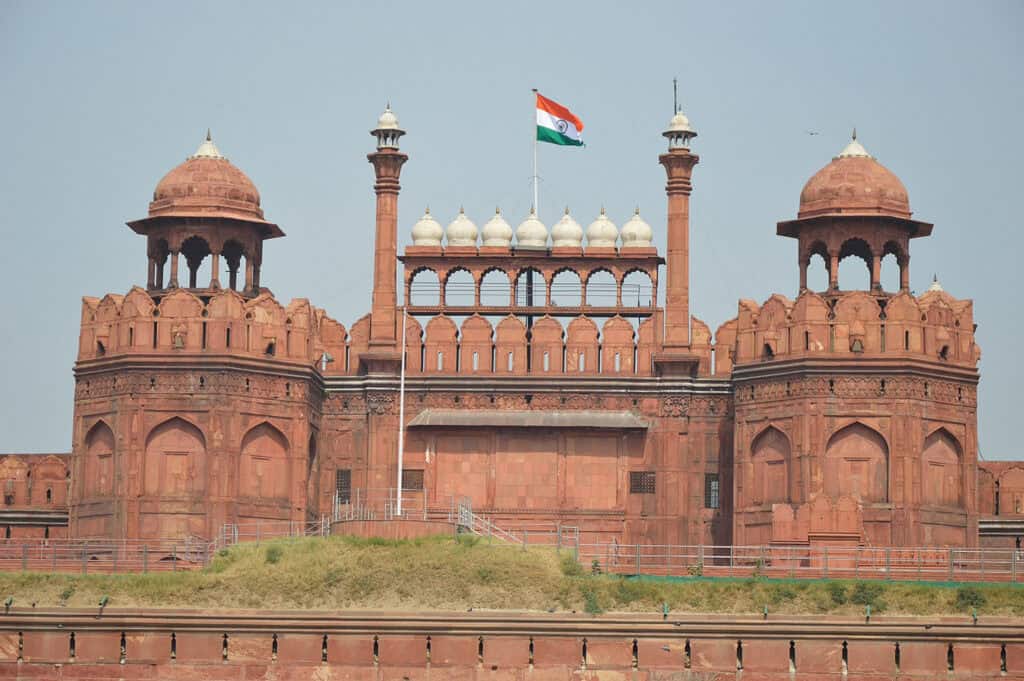
The Red Fort is a Mughal-era fort complex located in Old Delhi. The fort was built by Mughal Emperor Shah Jahan in the 17th century and is a UNESCO World Heritage site. The fort is made of red sandstone and features a blend of Indian, Persian, and Islamic architectural styles. The fort complex includes private apartments, public halls, and gardens.
Colonial and Post-Colonial Architecture
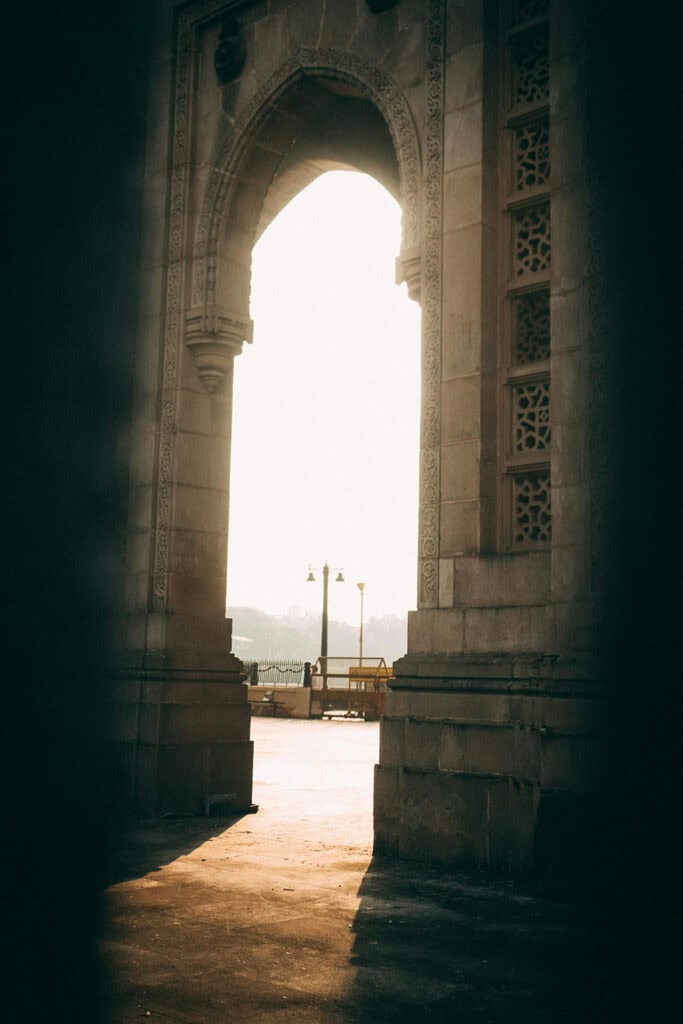

India’s colonial and post-colonial architecture is a unique blend of different architectural styles that were introduced during British rule. The most famous examples of colonial architecture in India are the Victoria Memorial and the Gateway of India.
8. Victoria Memorial
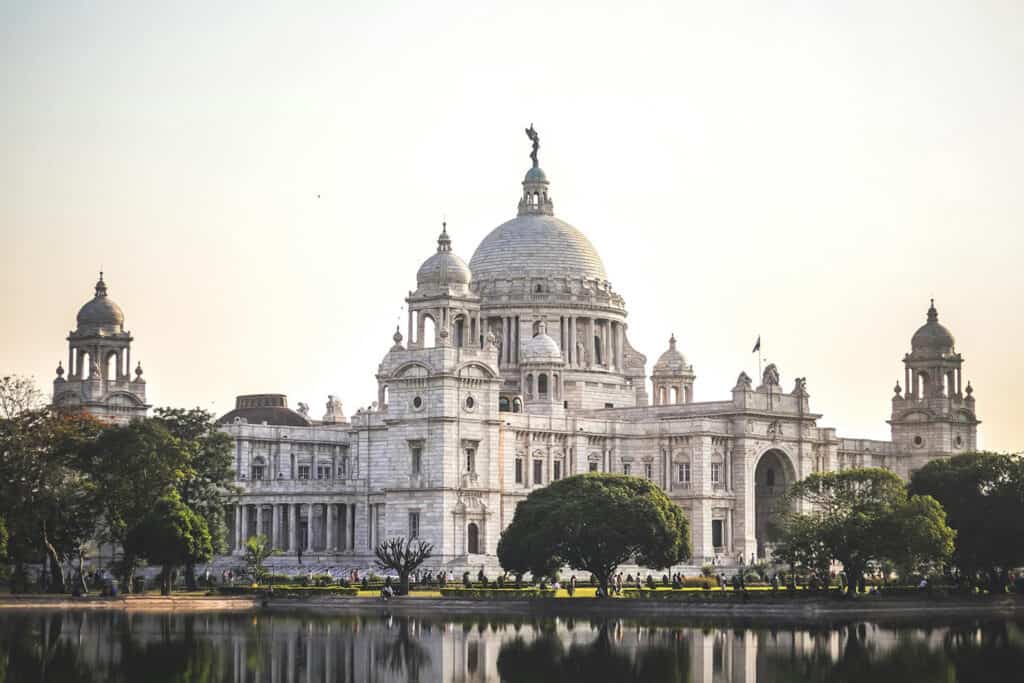
The Victoria Memorial is an iconic building in Kolkata that was built to honor Queen Victoria’s memory. This architectural masterpiece was designed in a fusion of British and Mughal architectural styles. The building is made of white marble and has a dome that is 184 feet high. The memorial is a UNESCO World Heritage site and is a popular tourist attraction.
9. Gateway of India
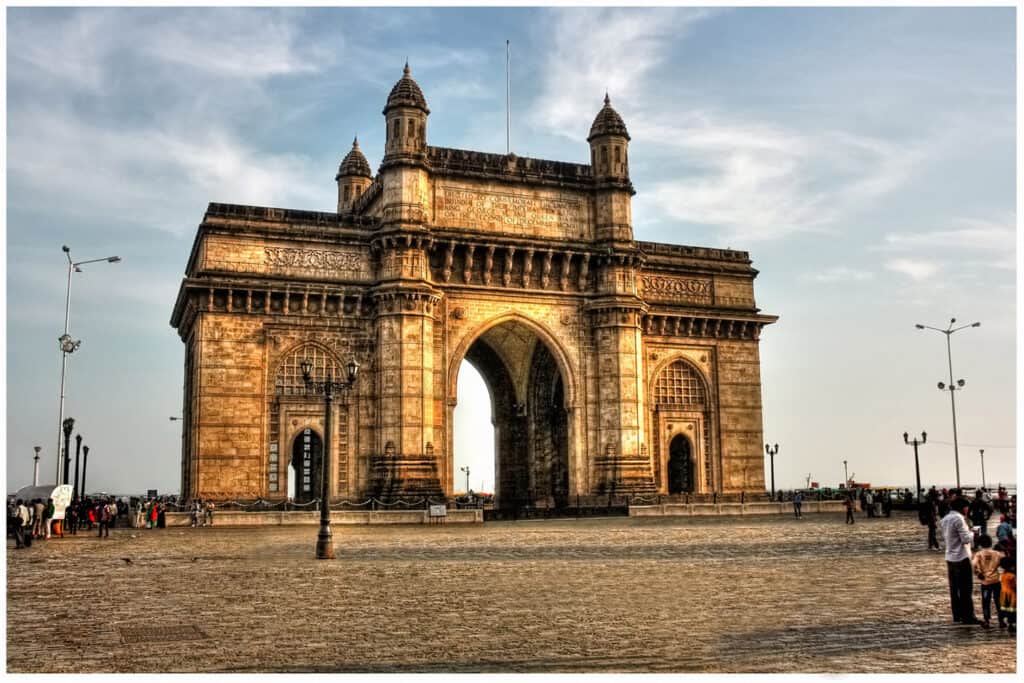
The Gateway of India is a prominent landmark in Mumbai that was built to commemorate the visit of King George V and Queen Mary to India in 1911. The structure was designed in the Indo-Saracenic Revivalist style, which is a fusion of Indian, Islamic, and European architectural elements. The Gateway of India is made of yellow basalt and reinforced concrete. It has four minarets and a central dome that is 83 feet high.
Modern Architecture
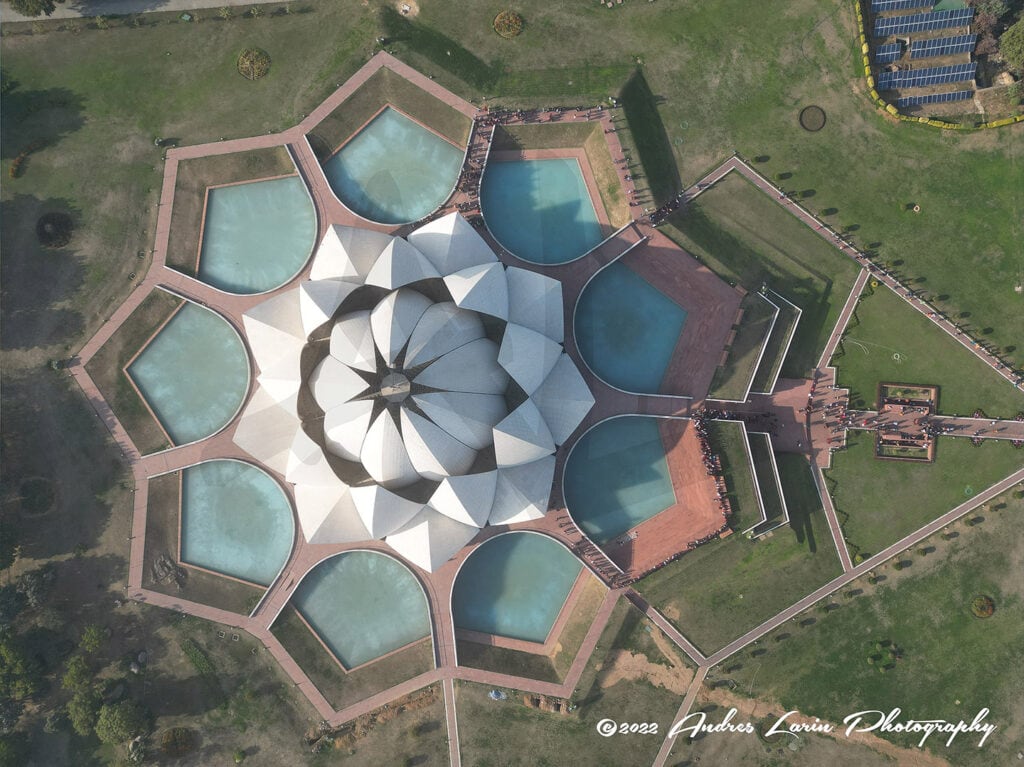
India’s modern architecture is diverse and influenced by various architectural styles. Some of the most famous modern architectural structures in India are the Lotus Temple and the Chandigarh Capitol Complex.
10. Lotus Temple
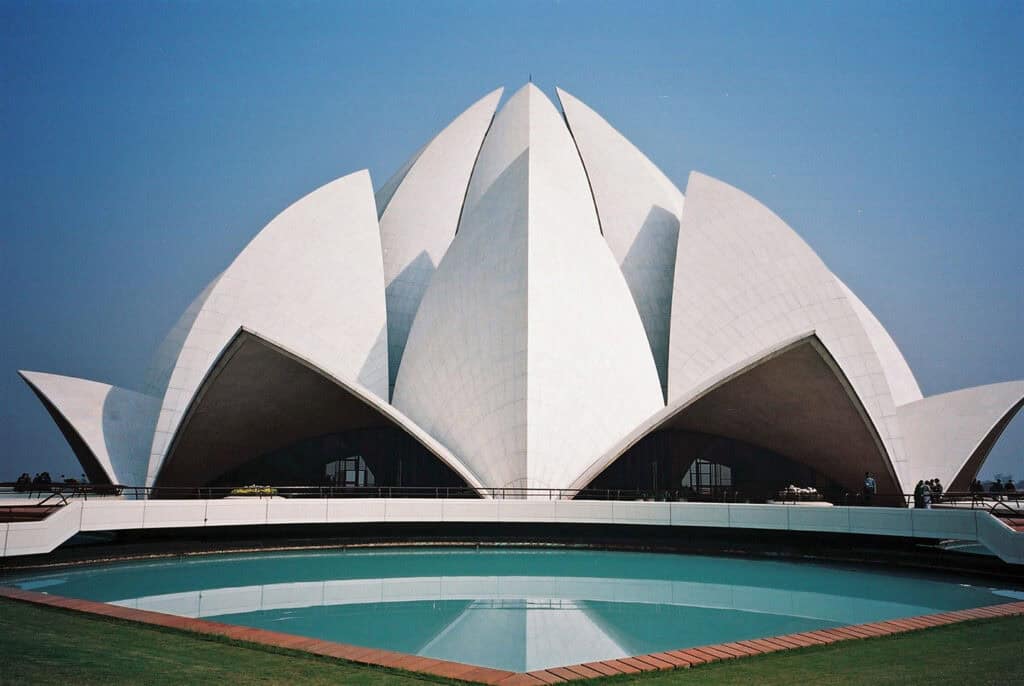
The Lotus Temple is a modern architectural masterpiece located in New Delhi, India. It is a Bahá’í House of Worship, and its unique shape resembles a lotus flower. The temple is made of white marble and has 27 free-standing petals that are arranged in three rows. The Lotus Temple has won numerous architectural awards and has become a popular tourist attraction.
11. Chandigarh Capitol Complex
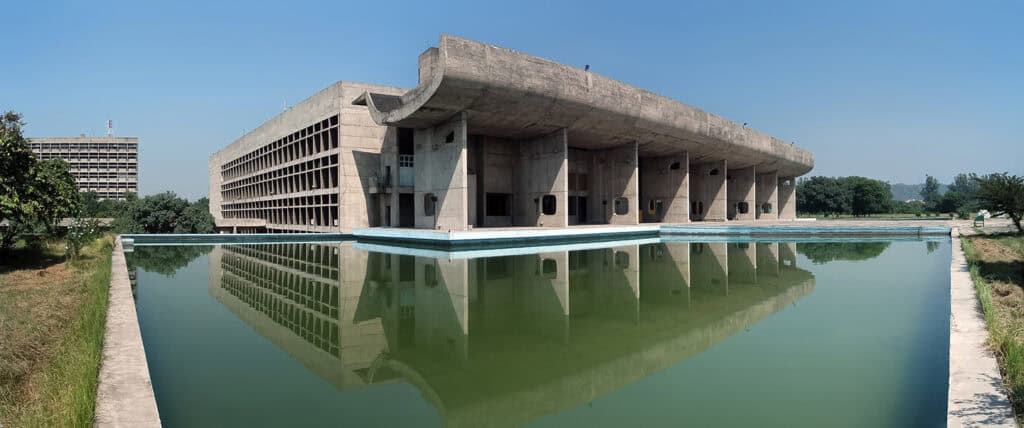
The Chandigarh Capitol Complex is a government building complex located in the city of Chandigarh. It was designed by Swiss-French architect Le Corbusier and is a UNESCO World Heritage Site. The complex includes three buildings: the Secretariat, the Legislative Assembly, and the High Court. The complex is known for its modernist style and use of concrete and steel.
See Also Famous Buildings in Malaysia
Regional Architectural Styles
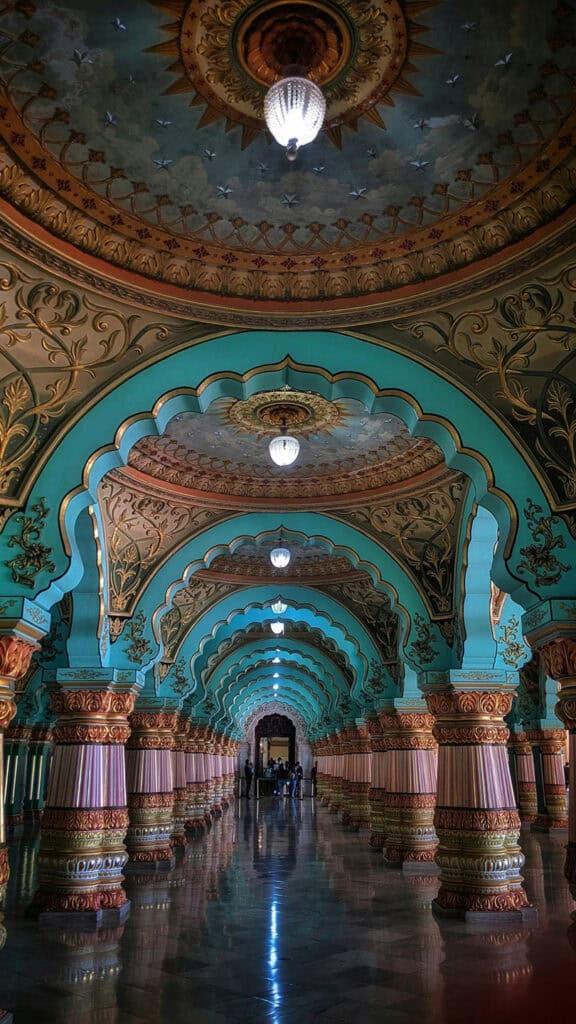
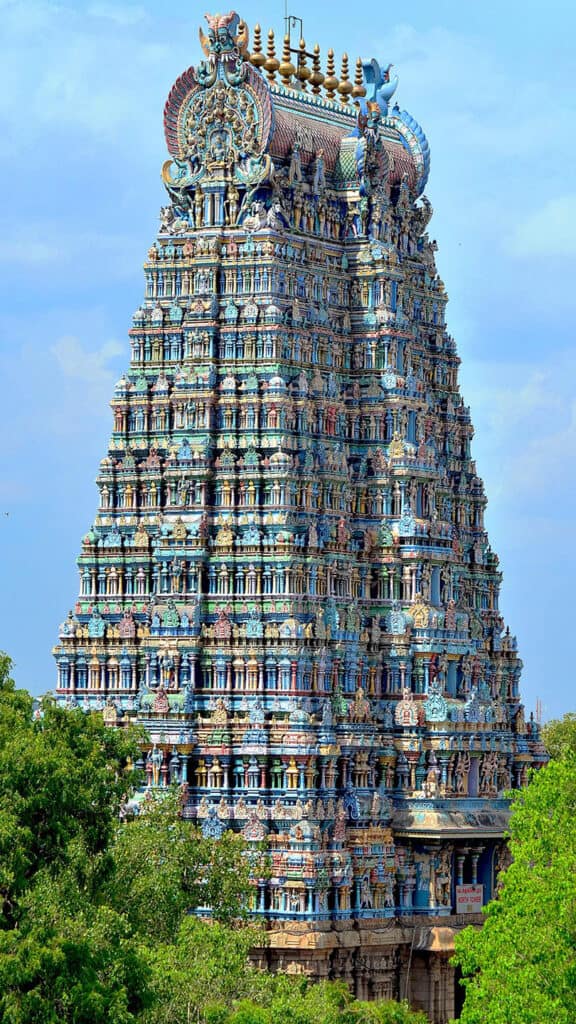
India is famous for its diverse architectural styles, each reflecting the local culture, religion, and history. Three of the most iconic regional styles are the Meenakshi Temple, Mysore Palace, and Hawa Mahal.
12. Meenakshi Temple

The Meenakshi Temple in Madurai, Tamil Nadu, is a prime example of Dravidian architecture, a style that originated in Southern India. The temple is dedicated to the Hindu goddess Meenakshi, and its intricate carvings and colorful sculptures are a testament to the skill of the local artisans.
13. Mysore Palace
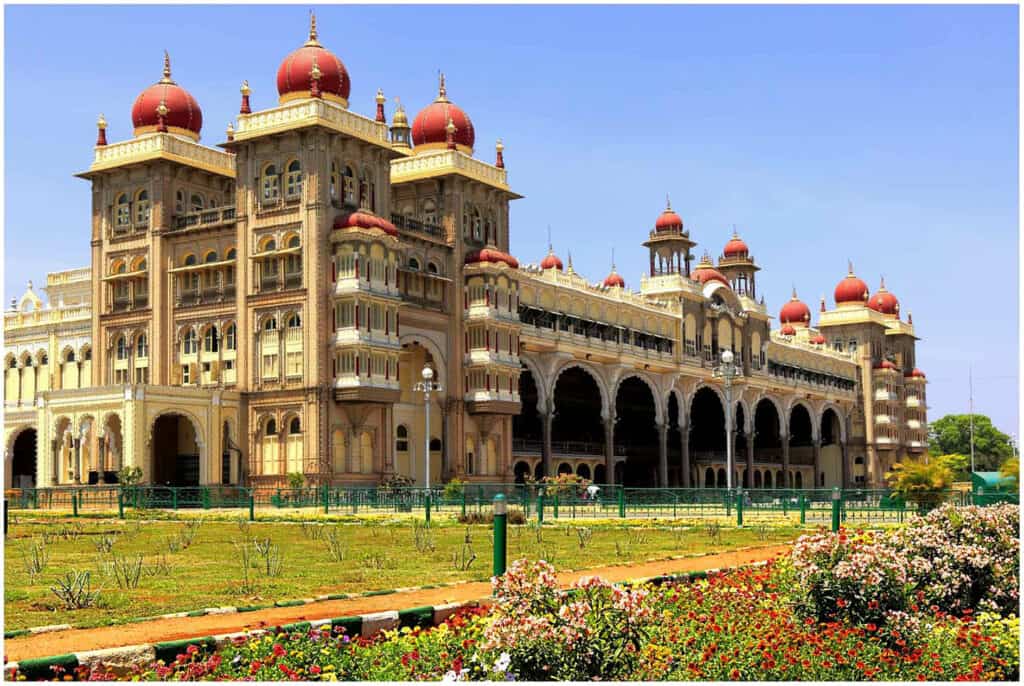
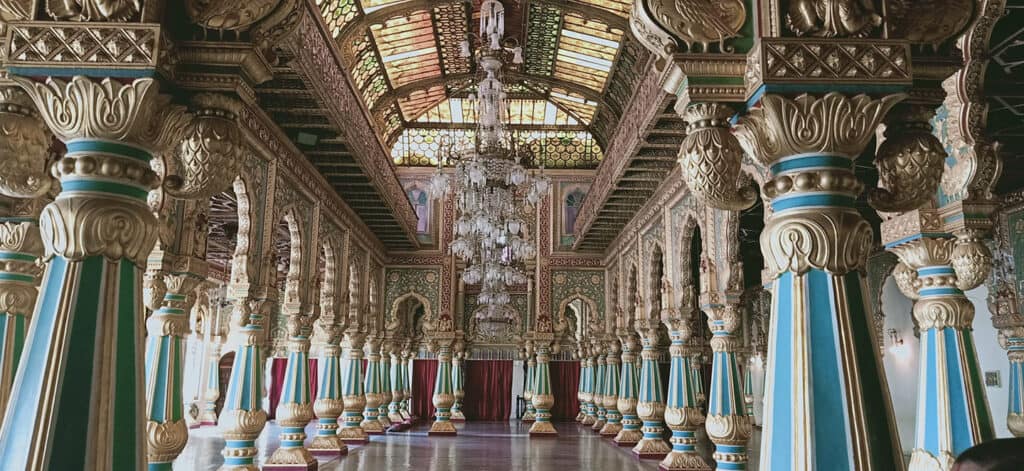
The Mysore Palace in Karnataka is a stunning example of Indo-Saracenic architecture, which blends Indian, Islamic, and Western styles. The palace was the residence of the Wodeyar dynasty, who ruled Mysore for over seven centuries. The palace is known for its intricate carvings, beautiful paintings, and stunning gardens.
14. Hawa Mahal
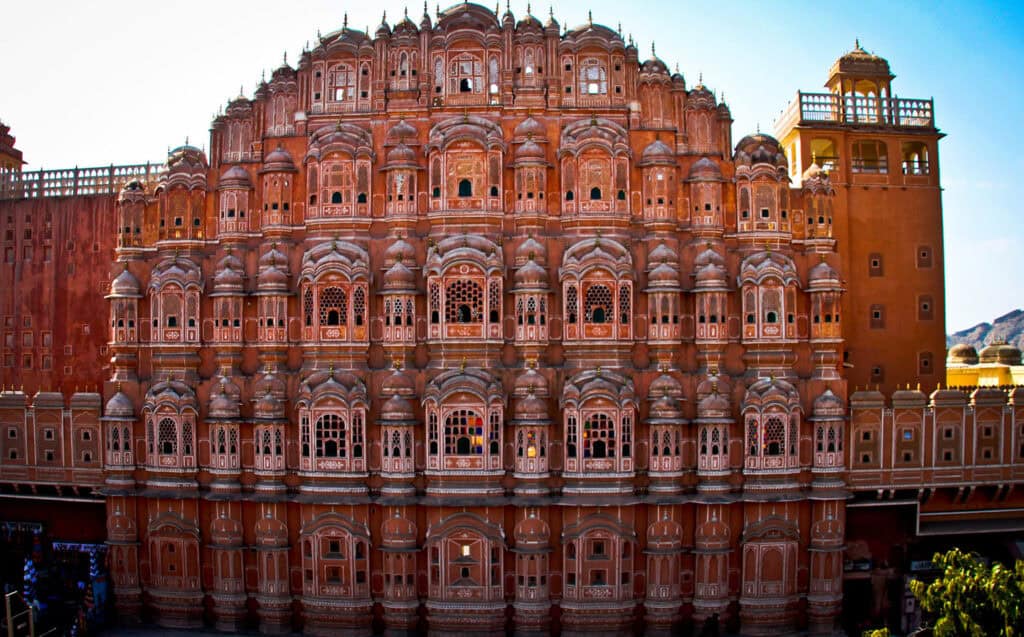
The Hawa Mahal, or “Palace of Winds,” is a unique structure located in the Pink City of Jaipur, Rajasthan. The palace was built in 1799 by Maharaja Sawai Pratap Singh in the Rajput style. The palace’s most distinctive feature is its facade, which is made up of hundreds of small windows that allow cool air to circulate through the building.
India’s architectural heritage is a testament to its rich history and cultural diversity, showcased through iconic landmarks like the Taj Mahal, Khajuraho Temples, and Konark Sun Temple. From ancient marvels to colonial gems and modern masterpieces, each structure reflects India’s artistic ingenuity and historical significance.
As we traverse through millennia of architectural evolution—from the intricate carvings of Ajanta Caves to the modernist marvels of Chandigarh—India’s buildings continue to captivate with their blend of tradition, innovation, and enduring allure. The essence of India’s architectural mosaic is found in every monument, narrating a story of craftsmanship, spirituality, and cultural resonance.









